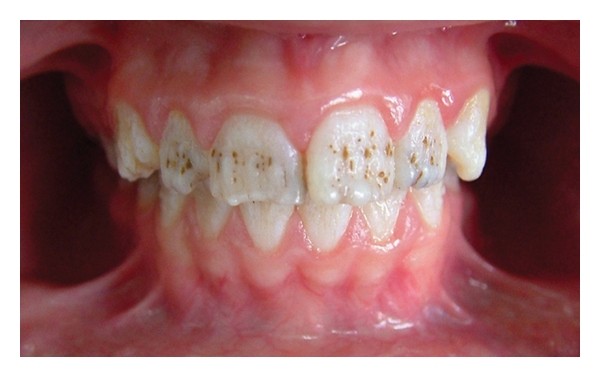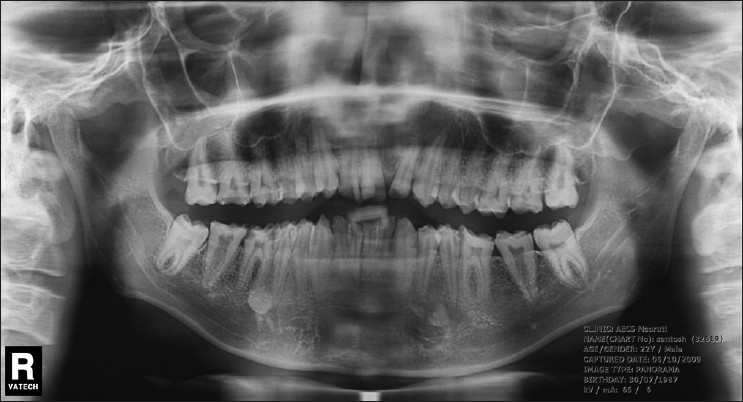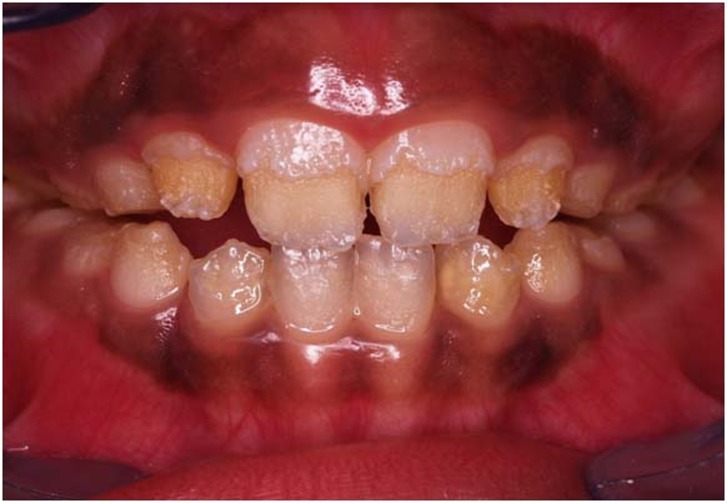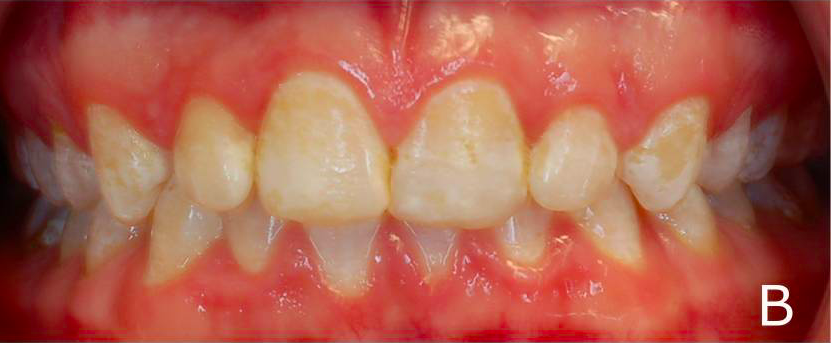Enamel anomalies
Enamel anomalies: There are two different types of enamel anomalies. Either the anomaly is related to a syndrome or a metabolic disorder, either the anomaly is not. Those who are not related to disorders are classified as amelogenesis imperfecta of which there are many different types.
Amelogenesis Imperfecta
Amelogenesis imperfecta is a complex enamel developmental disorder. Many different genes that play a role in amelogenesis contribute to the disorder. There are many different types of amelogenesis imperfecta and in this case it will be classified based off of Witkop's classification. Witkop's classification organizes the types based on the stage of enamel formation. The teeth affected by amelogenesis imperfecta can have a higher caries incidence due to the faster than normal dentin exposure, a late eruption and are more frequently impacted.
Type 1 - Hypoplastic
Type 1 amelogenesis imperfecta is a quantitative alteration of the enamel. The enamel is smooth but thinner depending on the severity of the condition. It can range from localized pits to complete enamel agenesis. The density of the enamel appears normal on an X-ray. An open bite can be seen as a consequence to hypoplastic amelogenesis imperfecta.



Affected genes: FAM20A (with gingival fibromatosis), ACPT, AMELX, ENAM, AMBN, LAMA3, LAMB3, COL17A1, ITGB6.
Type 2 - Hypomaturation
Type 2 amelogenesis imperfecta is a qualitative alteration of the enamel. The thickness is normal, however, the enamel is not mineralized completely. The enamel is soft and the density is equal to that of dentin, which can be easily seen on an X-ray. The enamel will detach easily from the dentin, but not as easily as type 3 hypomineralized. The teeth appear to be snow-capped with irregular white spots on the occlusal and incisor surfaces of the affected teeth.




Affected genes: AMELX, MMP20, KLK4, WDR72, SLC24A4.
Type 3 - Hypomineralized
Type 3 amelogenesis imperfecta is also a quailitative alteration of the enamel. The thickness is normal, however, the enamel is not mineralized completely. The enamel is soft and the density is lesser than that of dentin, which can be easily seen on an X-ray. The enamel will detach easily from the dentin due to the overwhelming occlusal forces. An open bite can also be a consequence of type 3 amelogenesis imperfecta.

Affected genes: C4ORF26, GPR68, SLC24A4, ITGB6, FAM83H.
Type 4 - Hypoplastic-Hypomaturation with taurodontism
Taurodontism is seen when the pulp chamber has a greater vertical dimension and the roots divides much more apically than normal. The teeth appear normal clinically, however, it can be easily diagnosed on an X-ray. See the size and shape anomaly page for more information about taurdodontism.
Affected genes: DLX3.
- Adel Kauzman, Faculté de médecine dentaire, Université de Montréal
- Smith CEL, Poulter JA, Antanaviciute A, Kirkham J, Brookes SJ, Inglehearn CF, Mighell AJ. Amelogenesis Imperfecta; Genes, Proteins, and Pathways. Front Physiol. 2017 Jun 26;8:435.
- Ağaçkiran E, Tümen EC, Celenk S, Bolgül B, Atakul F. Restoring aesthetics and function in a young boy with hypomature amelogenesis imperfecta: a case report. ISRN Dent. 2011;2011:586854.
- White S, Pharoah M. (2014). Oral Radiology Principles and Interpretation. Missouri: Elsevier Inc.
- Ranganath V, Nichani AS, Soumya V. Amelogenesis imperfecta: A challenge to restoring esthetics and function. J Indian Soc Periodontol. 2010 Jul;14(3):195-7.
- Pousette Lundgren G, Wickström A, Hasselblad T, Dahllöf G. Amelogenesis Imperfecta and Early Restorative Crown Therapy: An Interview Study with Adolescents and Young Adults on Their Experiences. PLoS One. 2016 Jun 30;11(6):e0156879.
